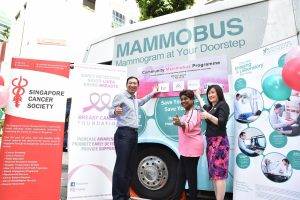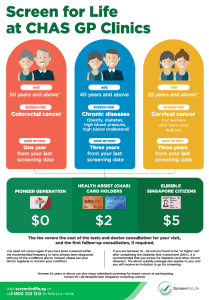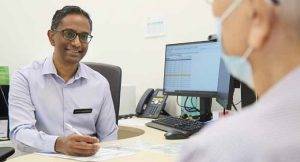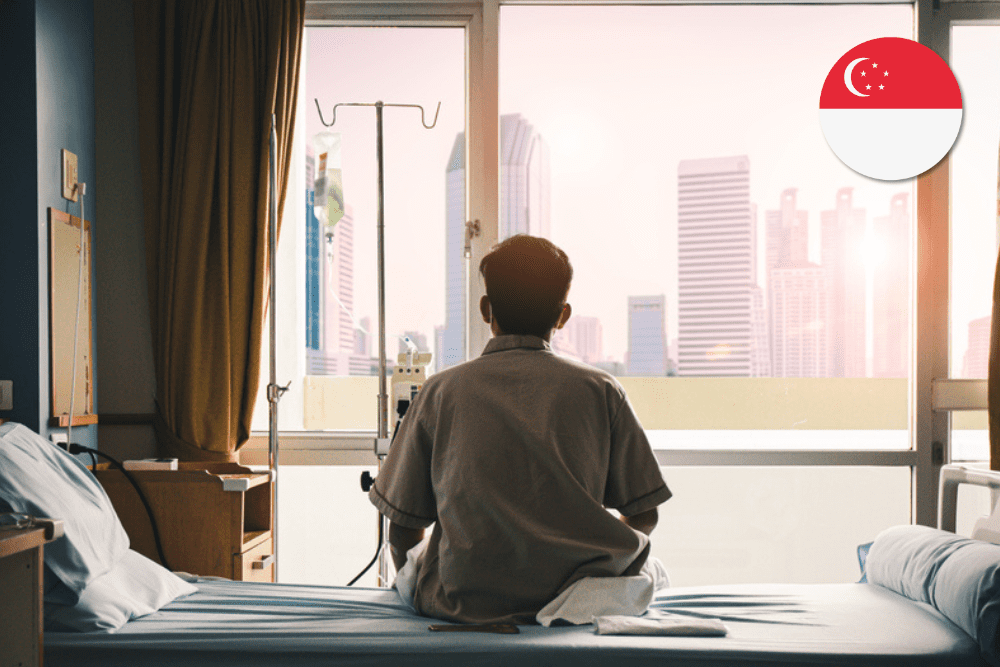In Singapore, 51% of cancer patients die from the disease, compared with 24% in Australia and 25% in the United States.
Singapore’s healthcare system ranks among the best in the world, with exceptional outcomes in infant mortality, longevity, and disability-adjusted life years – all achieved at less than half the cost of comparable nations.
Yet, when it comes to cancer survival rates, Singapore falls short.
Lower screening participation, delays in adopting advanced treatments, and pressing lifestyle factors raise an important question:
What’s preventing Singapore from matching global leaders in cancer survival outcomes?
What’s Holding Singapore Back in Cancer Survival?
Cancer is the second leading cause of death worldwide, and Singapore is no exception. In 2022, the nation recorded 13,277 cancer deaths, an alarming figure for a country celebrated for its advanced healthcare infrastructure.
Closer examination reveals gaps in execution and accessibility that hinder Singapore’s ability to match the cancer survival rates of global leaders like Australia and the United States.
Cancer Mortality Rates as % of Population (2022)
| Country | Cancer Deaths | Population | Deaths as % of Population |
| Singapore | 13,277 | 5,637,000 | 0.25% |
| Australia | 51,884 | 25,890,773 | 0.20% |
| United States | 605,761 | 331,900,000 | 0.18% |
| United Kingdom | 181,807 | 67,330,000 | 0.27% |
| Japan | 426,278 | 125,700,000 | 0.34% |
Data courtesy of World Cancer Research Fund
This prioritisation of early detection has yielded tangible results. In Australia, over 50% of eligible women participate in national breast cancer screening programmes, contributing to the country’s lower cancer mortality rate of 0.20%.
With a participation rate of just 35.1%, early intervention in Singapore remains a missed opportunity.
Singapore’s Unique Challenge is Equity, Not Resources
Singapore’s healthcare system is world-class, but significant challenges remain in ensuring equitable access to cancer care. The ageing population, with almost 20% of residents over 65, is contributing to rising cancer cases. Yet, low participation in routine screenings reveals gaps in reaching underserved groups.
Breast cancer, the leading cancer among women in Singapore, highlights the issue.
Early detection saves lives, but in Singapore, only 37% of eligible women get regular mammograms. That number drops to a worrying 21% for Malay women. Cultural fears, misconceptions, and lack of awareness about affordable options are key barriers.
Initiatives led by groups like the Singapore Cancer Society and the Breast Cancer Foundation also work to educate communities and make screening more accessible.

The Community Mammobus Programme provides subsidised mammogram screenings at just $0 for first-time Singaporean screeners and $10 for repeat screenings, to ensure that cost is not a barrier to early detection.

Subsidised cancer screening programmes, such as those under the Screen for Life initiative, are clearly laid out and accessible online.
However, the question remains: does everyone know how to access these services?
For older or less digitally literate individuals, these services may seem inaccessible, leaving some populations behind. Improving screening participation is vital, but addresses only part of the issue.
Experts Weigh In on Cancer Outcomes in Singapore
A paper by the Asia-Pacific Medical Technology Association was the first to raise the disparity in cancer mortality rates between Singapore and global leaders like Australia and the US.
MOH Clarifies Singapore’s Cancer Mortality Statistics
In response, MOH clarified that the figures cited in the report were projections, not actual data, noting that Singapore recorded 6,400 cancer deaths in 2022, rather than the projected 13,000. MOH also confirmed that Singapore’s ratio of cancer deaths to new cases – 33 per 100 – was comparable to countries like South Korea and Japan but higher than Australia and the US.
Addressing the role of NGS, MOH reiterated the need for careful evaluation of its clinical and cost-effectiveness before expanding its use. Deputy Director-General of Health Derrick Heng explained,
“Commercial healthcare companies are pushing this, but as a public authority, MOH needs to objectively evaluate if its use is in the broader public interest in ensuring affordability and good patient outcomes.”
This position aligns with the views of Associate Professor Ravindran Kanesvaran, Chair of Medical Oncology at the National Cancer Centre Singapore (NCCS). Speaking to The Straits Times, he said:
“While NGS has demonstrated potential as a tool that improves our understanding of a patient’s tumour characteristics, it is inaccurate to say that its widespread implementation will have any impact on a nation’s overall cancer mortality.”

He attributed Singapore’s higher cancer mortality rates to multiple factors, including low screening participation, age at diagnosis, access to care, and socio-economic disparities.
Conversely, Associate Professor David Tan of the National University Cancer Institute, Singapore (NCIS) emphasised the transformative potential of NGS.
He explained:
“NGS has the potential to identify the Achilles heel in every tumour, which can, in turn, help to enhance the efficacy of cancer therapy by facilitating the better selection of patients for the most appropriate treatments.”
While NGS holds promise, both MOH and experts like Prof Kanesvaran agree it cannot single-handedly address Singapore’s gaps in cancer care. Advancements must balance innovation, affordability, and sustainability to succeed.
What Needs to Change to Improve Cancer Outcomes?
Singapore’s healthcare system is recognised globally for its excellence, but its cancer outcomes highlight areas needing urgent attention. Barriers to screening participation, slow adoption of advanced technologies like NGS, and challenges in underserved communities reveal execution gaps.
While preventive measures are in place, more outreach is necessary to engage vulnerable populations. Public health campaigns must go beyond digital platforms, and policies should make innovations, such as NGS, more accessible.
Singapore has the tools to lead in cancer survival, but the clock is ticking. Cancer doesn’t wait—shouldn’t we act now?

